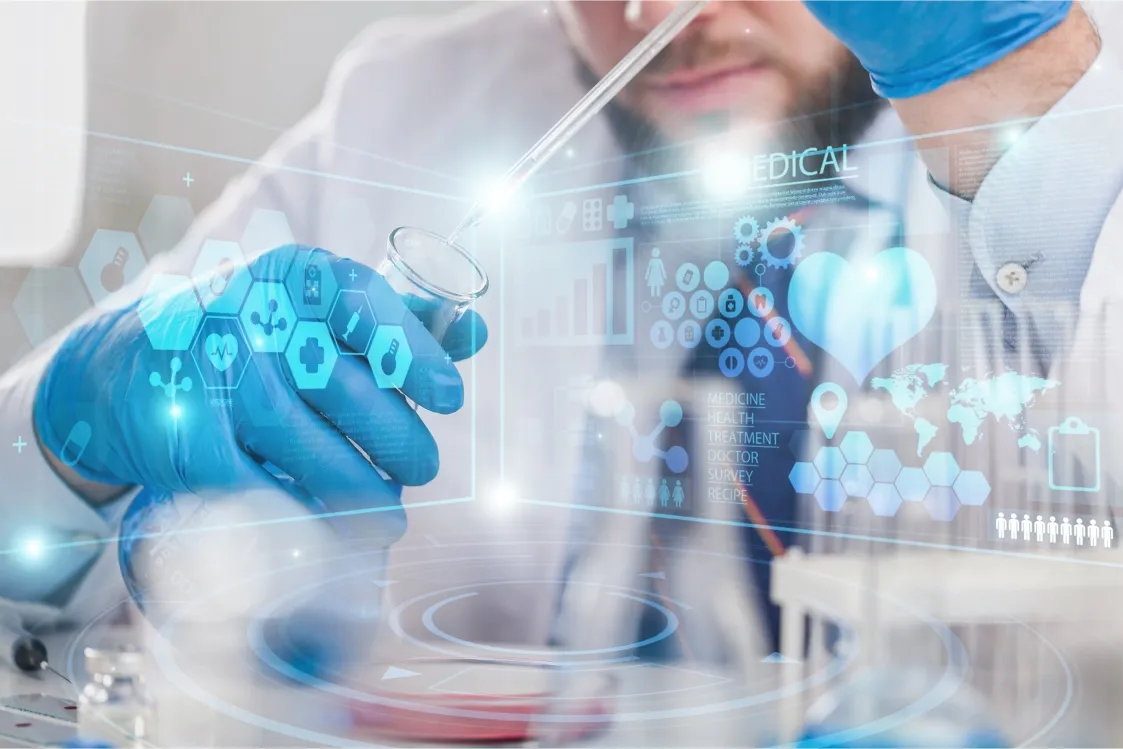Autologous Platelet Rich Plasma (PRP) Market 2025: Comprehensive Analysis and Growth Outlook
Autologous Platelet Rich Plasma (PRP) therapy is rapidly transforming the healthcare landscape by offering a natural, minimally invasive solution to tissue repair and regeneration. This innovative treatment uses concentrated platelets derived from a patient’s own blood to promote healing in orthopedic injuries, dermatological conditions, dental applications, and aesthetic procedures. With increasing clinical validation and rising patient demand for safer and personalized therapies, the autologous PRP market is poised for significant expansion by 2025.
Key Market Drivers Fueling Growth
- Rising Prevalence of Chronic Conditions and Sports Injuries
The global surge in musculoskeletal disorders such as osteoarthritis, tendonitis, and sports-related injuries is driving demand for regenerative treatments that enhance recovery and reduce surgical dependency. PRP therapy’s ability to accelerate tissue repair without synthetic drugs or invasive surgery makes it an appealing alternative. - Growing Patient Awareness and Preference for Minimally Invasive Treatments
As patients seek safer and more natural healthcare options, awareness about the benefits of PRP therapy continues to rise. The preference for treatments that harness the body’s own healing mechanisms has helped propel market adoption, particularly in aesthetics and dermatology. - Advancements in PRP Preparation Technologies
Technological innovations in centrifugation devices and PRP kits have standardized platelet concentration and improved the ease and reliability of procedures. These advancements enable healthcare providers to deliver consistent and effective treatments across diverse clinical settings. - Expansion of Aesthetic and Cosmetic Applications
The increasing popularity of PRP for skin rejuvenation, hair restoration, and scar treatment significantly contributes to market growth. These non-surgical aesthetic applications attract a broad consumer base, ranging from aging populations to younger demographics seeking preventive skin care. - Growing Healthcare Infrastructure in Emerging Markets
Improved healthcare access, rising disposable incomes, and increasing investments in medical technologies in regions such as Asia-Pacific, Latin America, and the Middle East are facilitating broader acceptance of PRP therapies.
Innovations Reshaping the Autologous PRP Market
- Enhanced PRP Preparation Systems
Next-generation PRP systems focus on delivering uniform platelet concentrations and minimizing contamination risks. Automated and closed-system devices are becoming industry standards, boosting clinical confidence and procedural efficiency. - Combination Therapies for Greater Efficacy
Integrating PRP with stem cells, hyaluronic acid, or other regenerative agents is opening new therapeutic avenues. These combination approaches hold promise in treating complex conditions that require multifaceted healing mechanisms. - Precision Delivery Techniques
Emerging injection techniques using ultrasound or imaging guidance allow precise targeting of affected tissues. This enhances treatment outcomes while reducing patient discomfort and recovery time. - Personalized PRP Formulations
Tailoring PRP preparations based on patient-specific factors and medical indications is an exciting frontier. Personalized therapies promise to maximize effectiveness and patient satisfaction. - Digital Integration and Data Analytics
Incorporating digital health tools to track patient outcomes and optimize treatment protocols is gradually influencing the PRP market. Data-driven insights can improve efficacy and help build evidence for long-term benefits.
Regional Market Dynamics
- North America: Market Leader with Advanced Infrastructure
North America dominates due to established healthcare systems, strong regulatory frameworks, and early adoption of regenerative therapies. Ongoing research and a high concentration of key players support continuous market growth. - Europe: Steady Growth Fueled by Safety and Compliance
Europe maintains steady growth, driven by stringent safety standards and growing awareness. Countries with mature healthcare markets are integrating PRP more extensively in orthopedics and cosmetic medicine. - Asia-Pacific: Fastest Growing Market
Asia-Pacific is experiencing rapid expansion thanks to rising healthcare investments, increasing patient awareness, and a large aging population. Nations like China, India, and Japan are key contributors, with improving regulations enhancing market potential. - Latin America and Middle East & Africa: Emerging Opportunities
Although still developing, these regions are witnessing increased interest in PRP therapies supported by international health initiatives and growing healthcare access. Cost sensitivity and infrastructure challenges remain, but prospects for growth are promising.
Strategic Considerations for Market Stakeholders
- Focus on Continuous Innovation
Sustained investment in R&D is crucial to develop advanced PRP systems that enhance safety, usability, and therapeutic outcomes while remaining cost-effective. - Forge Strategic Partnerships
Collaborations with healthcare providers, research institutions, and regulatory agencies can accelerate clinical validation and improve market penetration, especially in emerging regions. - Emphasize Education and Training
Providing comprehensive training for healthcare professionals ensures proper PRP application, maximizing clinical success and patient trust. - Customize Regional Marketing Approaches
Tailoring marketing and distribution strategies to align with local regulatory environments and healthcare practices enhances adoption and brand positioning. - Prioritize Sustainability and Safety
Incorporating environmentally responsible manufacturing and disposal methods will become increasingly important to meet evolving regulatory demands and consumer expectations. - Leverage Digital Tools
Adopting digital patient monitoring and outcome tracking platforms can differentiate offerings and build stronger patient engagement.
Conclusion
The autologous Platelet Rich Plasma market is on a robust growth path leading up to 2025, driven by increasing demand for regenerative, minimally invasive therapies across multiple medical disciplines. Technological innovation, expanding clinical evidence, and growing patient preference for personalized medicine are propelling adoption globally.
Regional disparities reflect varying healthcare maturity, but emerging markets present significant opportunities fueled by improved infrastructure and awareness. For healthcare companies and investors, aligning strategies with evolving market needs, regulatory frameworks, and technological trends will be key to unlocking the full potential of this promising sector.
By enabling the body’s natural healing power, autologous PRP therapies are set to redefine treatment paradigms, offering safer and more effective solutions that meet the evolving needs of patients worldwide.
NOTE:
Quants and Trends is proud to offer an extensive portfolio of meticulously researched healthcare market reports, numbering in the thousands. We also provide tailored customization services to ensure our insights align precisely with your strategic objectives and informational needs. For personalized assistance or to discuss your specific requirements, we invite you to get in touch with our team. We also encourage you to request a complimentary sample PDF report. Please visit our Sample Request Page to receive yours today.
Key Market Players
Harvest Technologies
DePuy Synthes
Stryker
Zimmer Biomet
Arthrex
Regen Lab
Exactech
Weigao
Emcyte Corporation
REV-MED
Segmentation By Type
P-PRP
L-PRP
PRF
Segmentation By Application
Orthopedic Surgery
Plastic Surgery
General Surgery
Others
Segmentation By Region
North America (United States, Canada and Mexico)
Europe (Germany, France, United Kingdom, Russia, Italy, and Rest of Europe)
Asia-Pacific (China, Japan, Korea, India, Southeast Asia, and Australia)
South America (Brazil, Argentina, Colombia, and Rest of South America)
Middle East & Africa (Saudi Arabia, UAE, Egypt, South Africa, and Rest of Middle East & Africa)
Market SWOT Analysis
What are the strengths of the Autologous Platelet Rich Plasma (PRP) market in 2025?
The PRP market benefits from its ability to provide natural healing and regeneration for various medical conditions, especially in orthopedics, dermatology, and sports medicine. This non-invasive therapy is gaining popularity for its reduced risk of rejection, faster recovery times, and growing clinical success. With advancements in technology, the quality and efficacy of PRP treatments are continuously improving, boosting market growth.
What weaknesses could affect the PRP market in 2025?
Despite its benefits, the PRP market faces challenges like a lack of standardization in preparation protocols, leading to inconsistent results. Additionally, its high treatment costs and limited insurance coverage may deter some patients. The scientific community is still debating the long-term efficacy of PRP, which may hinder broader acceptance and growth in the market.
What opportunities are present in the PRP market for 2025?
The PRP market holds significant potential in expanding applications, especially in hair restoration, wound healing, and aesthetic treatments. As the understanding of PRP’s benefits continues to grow, it offers opportunities for new product developments, including automated PRP preparation systems. Collaborations between healthcare providers and research institutions may lead to better protocols and wider clinical adoption.
What threats could impact the Autologous Platelet Rich Plasma (PRP) market in 2025?
Competition from other emerging regenerative medicine therapies, such as stem cell treatments, could reduce the demand for PRP. Regulatory hurdles in different regions may also pose challenges for market expansion. Furthermore, skepticism regarding the scientific evidence supporting PRP’s efficacy could slow down its acceptance in mainstream healthcare practices.
Market PESTEL Analysis
What are the political factors influencing the Autologous Platelet Rich Plasma (PRP) market in 2025?
Regulations surrounding medical treatments and healthcare policies are key political factors. In some regions, government policies on healthcare reimbursement for PRP treatments can limit or expand market growth. Political stability also plays a role in investment and healthcare infrastructure development, especially in emerging markets.
How do economic factors affect the PRP market in 2025?
Economic conditions, such as income levels and healthcare expenditure, directly influence the demand for PRP treatments. In regions with strong economic growth, there is higher spending on advanced treatments. However, the high cost of PRP procedures may limit access in lower-income areas, making the market more sensitive to economic downturns.
What social factors are shaping the PRP market in 2025?
As people become more health-conscious and seek minimally invasive, natural treatment options, PRP is gaining popularity in areas like aesthetic treatments and sports medicine. The growing trend of wellness and self-care, along with rising acceptance of regenerative medicine, contributes to increasing demand. However, social perceptions and awareness about the long-term benefits of PRP still need to improve in some communities.
What technological factors are impacting the PRP market in 2025?
Technological advancements in PRP preparation techniques, such as automated centrifuges and improved isolation methods, are enhancing the effectiveness and accessibility of treatments. Innovations in imaging and diagnostics also allow for more targeted and personalized PRP therapies. Continued development in these areas could drive the market further, making PRP a more attractive option.
What environmental factors affect the PRP market in 2025?
As PRP treatments are derived from patients’ own blood, the environmental impact is relatively minimal compared to other medical therapies. However, the use of medical waste in PRP procedures, such as disposable syringes and centrifuges, could raise environmental concerns. Growing awareness of sustainable practices in healthcare could push for more eco-friendly PRP technologies.
What legal factors influence the PRP market in 2025?
The legal landscape surrounding PRP treatments is critical, as different regions have varying regulations on medical procedures, licensing, and patient consent. Intellectual property rights around PRP technologies and methods could lead to legal battles between companies, impacting market competition. Strict regulations in certain countries regarding medical devices and treatments can also limit the expansion of the PRP market.
Market SIPOC Analysis
What are the suppliers in the Autologous Platelet Rich Plasma (PRP) market in 2025?
Suppliers include companies that provide the medical equipment and technology necessary for PRP preparation, such as centrifuges and blood collection kits. Additionally, suppliers of consumables like syringes, tubes, and diagnostic materials are critical to the PRP process. Research and biotechnology firms providing scientific advancements in PRP methods also play a role.
What inputs are required for the PRP market in 2025?
Inputs include blood from patients, specialized equipment for blood processing, skilled healthcare professionals to administer the procedure, and scientific research that validates the effectiveness of PRP treatments. Materials for sterile handling and packaging are also essential to ensure the safety and efficacy of PRP procedures.
What processes are involved in the PRP market in 2025?
Key processes include blood collection from the patient, centrifugation to isolate platelets, and preparation of the PRP solution. Medical professionals then administer the PRP into the patient’s target area (such as joints, skin, or scalp). The treatment process also involves pre-treatment consultations, post-procedure monitoring, and patient follow-up.
What are the outputs of the PRP market in 2025?
Outputs include successful PRP treatments that promote healing and tissue regeneration. This could involve improvements in patient mobility, skin rejuvenation, or hair regrowth, depending on the application. Additionally, advancements in PRP technology and patient outcomes provide valuable data and results for further research and market growth.
Who are the customers in the PRP market in 2025?
Customers include patients seeking non-invasive treatments for conditions such as arthritis, sports injuries, hair loss, and skin aging. Healthcare providers, including orthopedic surgeons, dermatologists, and aestheticians, are key customers, as they administer PRP treatments. Insurance companies may also be customers depending on their coverage policies for PRP procedures.
Market Porter's Five Forces
How does the threat of new entrants affect the Autologous Platelet Rich Plasma (PRP) market in 2025?
The threat of new entrants is moderate in the PRP market. While the initial investment in equipment and expertise is relatively high, technological advancements and growing interest in regenerative medicine make it easier for new companies to enter. However, the need for regulatory approvals and the requirement for specialized medical knowledge creates barriers to entry.
What is the bargaining power of suppliers in the PRP market in 2025?
The bargaining power of suppliers is moderate. While there are a few key suppliers for the equipment and materials necessary for PRP preparation, the market is expanding with new suppliers offering innovative solutions. However, specialized suppliers with patented technologies hold greater power in influencing pricing and availability.
How does the bargaining power of buyers impact the PRP market in 2025?
The bargaining power of buyers is moderate to high. As patients and healthcare providers become more informed about PRP, they seek the most cost-effective and clinically effective treatments. However, due to the specialized nature of the procedure and limited alternatives, buyers do not have as much power to drive prices down, especially in premium segments of the market.
What is the threat of substitute products or services in the PRP market in 2025?
The threat of substitutes is high. Other regenerative therapies, such as stem cell treatments, hyaluronic acid injections, and traditional surgeries, provide alternatives to PRP. These alternatives are often seen as more established or offer different benefits, which could divert patients from choosing PRP treatments.
How intense is the rivalry among existing competitors in the PRP market in 2025?
Rivalry among existing competitors is moderate. While the PRP market is growing, there are still relatively few players with substantial market share. Competition is increasing as more healthcare providers adopt PRP treatments, and companies innovate to differentiate their products. However, the market is still in a phase of expansion rather than consolidation, so competition remains somewhat fragmented.
Market Upstream Analysis
What are the key suppliers in the upstream segment of the PRP market in 2025?
Key suppliers in the upstream segment include manufacturers of medical devices such as blood collection kits, centrifuges, and specialized equipment for PRP preparation. Additionally, suppliers of consumables like syringes, tubes, and platelet activation agents play a critical role. Biotechnology firms involved in research and development of PRP technologies also contribute significantly to the upstream segment.
What raw materials are needed for the PRP process in 2025?
The primary raw material needed for PRP treatment is the patient's own blood, which is collected for processing. Other essential materials include sterile collection kits, anticoagulants to prevent clotting, and specialized consumables like syringes and tubes for storing and injecting the PRP. Advanced PRP preparation systems require high-quality reagents and materials to ensure the concentration of platelets and other growth factors is optimized.
What technological advancements influence the upstream segment of the PRP market in 2025?
Technological advancements in blood separation technologies, such as automated centrifuges and advanced filtration systems, are key influences. Improvements in platelet isolation methods and innovations in PRP preparation kits make the process more efficient and consistent. Additionally, advancements in regulatory compliance technologies and quality control systems impact upstream suppliers by ensuring that products meet clinical standards.
How do regulatory requirements affect upstream suppliers in the PRP market in 2025?
Regulatory requirements play a significant role in the upstream segment by shaping product development, manufacturing, and quality control processes. Suppliers must adhere to strict guidelines set by regulatory bodies like the FDA and EMA, which ensure the safety and efficacy of PRP devices and consumables. Compliance with these regulations can drive up costs and influence the pace at which new technologies are introduced to the market.
What challenges do upstream suppliers face in the PRP market in 2025?
Upstream suppliers face challenges related to the high cost of production for specialized equipment and consumables, especially as the PRP market grows and demand increases. Regulatory hurdles, including the need for certification and testing, also create barriers to innovation. Additionally, as PRP treatment is highly dependent on the quality of raw materials, variations in the effectiveness of platelet preparation can lead to inconsistent results, challenging suppliers to maintain high standards.
Market Midstream Analysis
What are the key processes involved in the midstream segment of the PRP market in 2025?
The key processes in the midstream segment include blood collection, platelet separation, and preparation of the PRP solution. Blood is typically collected from the patient and processed using centrifuges or filtration systems to isolate the platelet-rich plasma. Once the PRP is prepared, it is either stored or immediately administered to the patient based on the treatment plan.
What are the main challenges faced in the midstream segment of the PRP market in 2025?
One of the main challenges is ensuring consistency in PRP preparation. Variations in the quality of the platelet concentrate can affect the outcomes of the treatment. Additionally, the complexity and cost of the equipment required for processing PRP, such as centrifuges and filtration systems, can be a barrier for some clinics and healthcare providers. Standardization of the preparation methods also remains a key challenge.
How does the role of healthcare professionals impact the midstream segment in 2025?
Healthcare professionals, including doctors and technicians, play a vital role in the midstream segment. Their expertise is required in the blood collection process, as well as in the operation of specialized equipment to prepare PRP. The skill and experience of these professionals directly influence the quality and effectiveness of the PRP treatment, making their role crucial for the success of the procedure.
What are the technological advancements affecting the midstream segment in the PRP market in 2025?
Technological advancements in automated PRP preparation systems are improving efficiency and consistency. Newer centrifuge systems are more precise and easier to use, allowing for higher-quality platelet isolation with minimal human error. Additionally, innovations in platelet activation methods are being explored to enhance the regenerative effects of PRP, leading to better treatment outcomes.
What regulatory challenges do companies face in the midstream segment of the PRP market in 2025?
Regulatory challenges include the need for compliance with stringent medical device regulations, particularly in regions like the U.S. and Europe. Companies must ensure that their blood processing equipment meets safety standards and is approved by relevant authorities. Additionally, as PRP is still a relatively new treatment, ongoing clinical trials and research are needed to gather more data on its efficacy, which may lead to changes in regulatory requirements.
Market Downstream Analysis
What are the key activities in the downstream segment of the PRP market in 2025?
The key activities in the downstream segment include the administration of PRP treatments to patients, post-treatment care, and monitoring of outcomes. Healthcare professionals inject the prepared PRP into the targeted area, such as joints, skin, or scalp, based on the specific condition being treated. Patient follow-up to assess treatment effectiveness and manage any potential side effects is also an important downstream activity.
What challenges do companies face in the downstream segment of the PRP market in 2025?
Challenges in the downstream segment include patient variability in response to treatment, which can affect the perceived effectiveness of PRP. Additionally, high treatment costs and limited insurance coverage for PRP therapy can make it less accessible for some patients. The lack of standardization in treatment protocols and the need for ongoing clinical evidence to prove long-term efficacy may also pose challenges.
How does customer demand affect the downstream segment in 2025?
Customer demand for PRP treatments is growing as patients seek natural and minimally invasive options for conditions like hair loss, joint pain, and skin rejuvenation. As awareness increases and treatment success stories spread, demand is expected to rise. However, the level of demand may vary by region, with wealthier markets and those with greater access to advanced healthcare technologies showing higher uptake.
What role do healthcare providers play in the downstream segment of the PRP market in 2025?
Healthcare providers, including dermatologists, orthopedists, and sports medicine specialists, are critical in the downstream segment. They not only administer PRP treatments but also educate patients about the benefits and risks of the procedure. Their expertise in assessing patients' suitability for PRP and in post-treatment care is essential for ensuring successful outcomes and patient satisfaction.
What are the technological influences in the downstream segment of the PRP market in 2025?
Technological advancements, such as improved PRP delivery devices and personalized treatment plans based on patient data, are enhancing the downstream segment. New tools for precise injection and better monitoring technologies are helping healthcare providers optimize treatment results. Additionally, digital platforms for patient management and follow-up care are becoming increasingly important in providing continuous support and tracking treatment outcomes.
Chapter 1, to describe Autologous Platelet Rich Plasma (PRP) product scope, market overview, market estimation caveats and base year.
Chapter 2, to profile the top manufacturers of Autologous Platelet Rich Plasma (PRP), with price, sales, revenue and global market share of Autologous Platelet Rich Plasma (PRP) from 2018 to 2023.
Chapter 3, the Autologous Platelet Rich Plasma (PRP) competitive situation, sales quantity, revenue and global market share of top manufacturers are analyzed emphatically by landscape contrast.
Chapter 4, the Autologous Platelet Rich Plasma (PRP) breakdown data are shown at the regional level, to show the sales quantity, consumption value and growth by regions, from 2018 to 2029.
Chapter 5 and 6, to segment the sales by Type and application, with sales market share and growth rate by type, application, from 2018 to 2029.
Chapter 7, 8, 9, 10 and 11, to break the sales data at the country level, with sales quantity, consumption value and market share for key countries in the world, from 2017 to 2022.and Autologous Platelet Rich Plasma (PRP) market forecast, by regions, type and application, with sales and revenue, from 2024 to 2029.
Chapter 12, market dynamics, drivers, restraints, trends and Porters Five Forces analysis.
Chapter 13, the key raw materials and key suppliers, and industry chain of Autologous Platelet Rich Plasma (PRP).
Chapter 14 and 15, to describe Autologous Platelet Rich Plasma (PRP) sales channel, distributors, customers, research findings and conclusion.
1 Market Overview
1.1 Product Overview and Scope of Autologous Platelet Rich Plasma (PRP)
1.2 Market Estimation Caveats and Base Year
1.3 Market Analysis by Type
1.3.1 Overview: Global Autologous Platelet Rich Plasma (PRP) Consumption Value by Type: 2018 Versus 2022 Versus 2029
1.3.2 P-PRP
1.3.3 L-PRP
1.3.4 PRF
1.4 Market Analysis by Application
1.4.1 Overview: Global Autologous Platelet Rich Plasma (PRP) Consumption Value by Application: 2018 Versus 2022 Versus 2029
1.4.2 Orthopedic Surgery
1.4.3 Plastic Surgery
1.4.4 General Surgery
1.4.5 Others
1.5 Global Autologous Platelet Rich Plasma (PRP) Market Size & Forecast
1.5.1 Global Autologous Platelet Rich Plasma (PRP) Consumption Value (2018 & 2022 & 2029)
1.5.2 Global Autologous Platelet Rich Plasma (PRP) Sales Quantity (2018-2029)
1.5.3 Global Autologous Platelet Rich Plasma (PRP) Average Price (2018-2029)
2 Manufacturers Profiles
2.1 Harvest Technologies
2.1.1 Harvest Technologies Details
2.1.2 Harvest Technologies Major Business
2.1.3 Harvest Technologies Autologous Platelet Rich Plasma (PRP) Product and Services
2.1.4 Harvest Technologies Autologous Platelet Rich Plasma (PRP) Sales Quantity, Average Price, Revenue, Gross Margin and Market Share (2018-2023)
2.1.5 Harvest Technologies Recent Developments/Updates
2.2 DePuy Synthes
2.2.1 DePuy Synthes Details
2.2.2 DePuy Synthes Major Business
2.2.3 DePuy Synthes Autologous Platelet Rich Plasma (PRP) Product and Services
2.2.4 DePuy Synthes Autologous Platelet Rich Plasma (PRP) Sales Quantity, Average Price, Revenue, Gross Margin and Market Share (2018-2023)
2.2.5 DePuy Synthes Recent Developments/Updates
2.3 Stryker
2.3.1 Stryker Details
2.3.2 Stryker Major Business
2.3.3 Stryker Autologous Platelet Rich Plasma (PRP) Product and Services
2.3.4 Stryker Autologous Platelet Rich Plasma (PRP) Sales Quantity, Average Price, Revenue, Gross Margin and Market Share (2018-2023)
2.3.5 Stryker Recent Developments/Updates
2.4 Zimmer Biomet
2.4.1 Zimmer Biomet Details
2.4.2 Zimmer Biomet Major Business
2.4.3 Zimmer Biomet Autologous Platelet Rich Plasma (PRP) Product and Services
2.4.4 Zimmer Biomet Autologous Platelet Rich Plasma (PRP) Sales Quantity, Average Price, Revenue, Gross Margin and Market Share (2018-2023)
2.4.5 Zimmer Biomet Recent Developments/Updates
2.5 Arthrex
2.5.1 Arthrex Details
2.5.2 Arthrex Major Business
2.5.3 Arthrex Autologous Platelet Rich Plasma (PRP) Product and Services
2.5.4 Arthrex Autologous Platelet Rich Plasma (PRP) Sales Quantity, Average Price, Revenue, Gross Margin and Market Share (2018-2023)
2.5.5 Arthrex Recent Developments/Updates
2.6 Regen Lab
2.6.1 Regen Lab Details
2.6.2 Regen Lab Major Business
2.6.3 Regen Lab Autologous Platelet Rich Plasma (PRP) Product and Services
2.6.4 Regen Lab Autologous Platelet Rich Plasma (PRP) Sales Quantity, Average Price, Revenue, Gross Margin and Market Share (2018-2023)
2.6.5 Regen Lab Recent Developments/Updates
2.7 Exactech
2.7.1 Exactech Details
2.7.2 Exactech Major Business
2.7.3 Exactech Autologous Platelet Rich Plasma (PRP) Product and Services
2.7.4 Exactech Autologous Platelet Rich Plasma (PRP) Sales Quantity, Average Price, Revenue, Gross Margin and Market Share (2018-2023)
2.7.5 Exactech Recent Developments/Updates
2.8 Weigao
2.8.1 Weigao Details
2.8.2 Weigao Major Business
2.8.3 Weigao Autologous Platelet Rich Plasma (PRP) Product and Services
2.8.4 Weigao Autologous Platelet Rich Plasma (PRP) Sales Quantity, Average Price, Revenue, Gross Margin and Market Share (2018-2023)
2.8.5 Weigao Recent Developments/Updates
2.9 Emcyte Corporation
2.9.1 Emcyte Corporation Details
2.9.2 Emcyte Corporation Major Business
2.9.3 Emcyte Corporation Autologous Platelet Rich Plasma (PRP) Product and Services
2.9.4 Emcyte Corporation Autologous Platelet Rich Plasma (PRP) Sales Quantity, Average Price, Revenue, Gross Margin and Market Share (2018-2023)
2.9.5 Emcyte Corporation Recent Developments/Updates
2.10 REV-MED
2.10.1 REV-MED Details
2.10.2 REV-MED Major Business
2.10.3 REV-MED Autologous Platelet Rich Plasma (PRP) Product and Services
2.10.4 REV-MED Autologous Platelet Rich Plasma (PRP) Sales Quantity, Average Price, Revenue, Gross Margin and Market Share (2018-2023)
2.10.5 REV-MED Recent Developments/Updates
3 Competitive Environment: Autologous Platelet Rich Plasma (PRP) by Manufacturer
3.1 Global Autologous Platelet Rich Plasma (PRP) Sales Quantity by Manufacturer (2018-2023)
3.2 Global Autologous Platelet Rich Plasma (PRP) Revenue by Manufacturer (2018-2023)
3.3 Global Autologous Platelet Rich Plasma (PRP) Average Price by Manufacturer (2018-2023)
3.4 Market Share Analysis (2022)
3.4.1 Producer Shipments of Autologous Platelet Rich Plasma (PRP) by Manufacturer Revenue ($MM) and Market Share (%): 2022
3.4.2 Top 3 Autologous Platelet Rich Plasma (PRP) Manufacturer Market Share in 2022
3.4.2 Top 6 Autologous Platelet Rich Plasma (PRP) Manufacturer Market Share in 2022
3.5 Autologous Platelet Rich Plasma (PRP) Market: Overall Company Footprint Analysis
3.5.1 Autologous Platelet Rich Plasma (PRP) Market: Region Footprint
3.5.2 Autologous Platelet Rich Plasma (PRP) Market: Company Product Type Footprint
3.5.3 Autologous Platelet Rich Plasma (PRP) Market: Company Product Application Footprint
3.6 New Market Entrants and Barriers to Market Entry
3.7 Mergers, Acquisition, Agreements, and Collaborations
4 Consumption Analysis by Region
4.1 Global Autologous Platelet Rich Plasma (PRP) Market Size by Region
4.1.1 Global Autologous Platelet Rich Plasma (PRP) Sales Quantity by Region (2018-2029)
4.1.2 Global Autologous Platelet Rich Plasma (PRP) Consumption Value by Region (2018-2029)
4.1.3 Global Autologous Platelet Rich Plasma (PRP) Average Price by Region (2018-2029)
4.2 North America Autologous Platelet Rich Plasma (PRP) Consumption Value (2018-2029)
4.3 Europe Autologous Platelet Rich Plasma (PRP) Consumption Value (2018-2029)
4.4 Asia-Pacific Autologous Platelet Rich Plasma (PRP) Consumption Value (2018-2029)
4.5 South America Autologous Platelet Rich Plasma (PRP) Consumption Value (2018-2029)
4.6 Middle East and Africa Autologous Platelet Rich Plasma (PRP) Consumption Value (2018-2029)
5 Market Segment by Type
5.1 Global Autologous Platelet Rich Plasma (PRP) Sales Quantity by Type (2018-2029)
5.2 Global Autologous Platelet Rich Plasma (PRP) Consumption Value by Type (2018-2029)
5.3 Global Autologous Platelet Rich Plasma (PRP) Average Price by Type (2018-2029)
6 Market Segment by Application
6.1 Global Autologous Platelet Rich Plasma (PRP) Sales Quantity by Application (2018-2029)
6.2 Global Autologous Platelet Rich Plasma (PRP) Consumption Value by Application (2018-2029)
6.3 Global Autologous Platelet Rich Plasma (PRP) Average Price by Application (2018-2029)
7 North America
7.1 North America Autologous Platelet Rich Plasma (PRP) Sales Quantity by Type (2018-2029)
7.2 North America Autologous Platelet Rich Plasma (PRP) Sales Quantity by Application (2018-2029)
7.3 North America Autologous Platelet Rich Plasma (PRP) Market Size by Country
7.3.1 North America Autologous Platelet Rich Plasma (PRP) Sales Quantity by Country (2018-2029)
7.3.2 North America Autologous Platelet Rich Plasma (PRP) Consumption Value by Country (2018-2029)
7.3.3 United States Market Size and Forecast (2018-2029)
7.3.4 Canada Market Size and Forecast (2018-2029)
7.3.5 Mexico Market Size and Forecast (2018-2029)
8 Europe
8.1 Europe Autologous Platelet Rich Plasma (PRP) Sales Quantity by Type (2018-2029)
8.2 Europe Autologous Platelet Rich Plasma (PRP) Sales Quantity by Application (2018-2029)
8.3 Europe Autologous Platelet Rich Plasma (PRP) Market Size by Country
8.3.1 Europe Autologous Platelet Rich Plasma (PRP) Sales Quantity by Country (2018-2029)
8.3.2 Europe Autologous Platelet Rich Plasma (PRP) Consumption Value by Country (2018-2029)
8.3.3 Germany Market Size and Forecast (2018-2029)
8.3.4 France Market Size and Forecast (2018-2029)
8.3.5 United Kingdom Market Size and Forecast (2018-2029)
8.3.6 Russia Market Size and Forecast (2018-2029)
8.3.7 Italy Market Size and Forecast (2018-2029)
9 Asia-Pacific
9.1 Asia-Pacific Autologous Platelet Rich Plasma (PRP) Sales Quantity by Type (2018-2029)
9.2 Asia-Pacific Autologous Platelet Rich Plasma (PRP) Sales Quantity by Application (2018-2029)
9.3 Asia-Pacific Autologous Platelet Rich Plasma (PRP) Market Size by Region
9.3.1 Asia-Pacific Autologous Platelet Rich Plasma (PRP) Sales Quantity by Region (2018-2029)
9.3.2 Asia-Pacific Autologous Platelet Rich Plasma (PRP) Consumption Value by Region (2018-2029)
9.3.3 China Market Size and Forecast (2018-2029)
9.3.4 Japan Market Size and Forecast (2018-2029)
9.3.5 Korea Market Size and Forecast (2018-2029)
9.3.6 India Market Size and Forecast (2018-2029)
9.3.7 Southeast Asia Market Size and Forecast (2018-2029)
9.3.8 Australia Market Size and Forecast (2018-2029)
10 South America
10.1 South America Autologous Platelet Rich Plasma (PRP) Sales Quantity by Type (2018-2029)
10.2 South America Autologous Platelet Rich Plasma (PRP) Sales Quantity by Application (2018-2029)
10.3 South America Autologous Platelet Rich Plasma (PRP) Market Size by Country
10.3.1 South America Autologous Platelet Rich Plasma (PRP) Sales Quantity by Country (2018-2029)
10.3.2 South America Autologous Platelet Rich Plasma (PRP) Consumption Value by Country (2018-2029)
10.3.3 Brazil Market Size and Forecast (2018-2029)
10.3.4 Argentina Market Size and Forecast (2018-2029)
11 Middle East & Africa
11.1 Middle East & Africa Autologous Platelet Rich Plasma (PRP) Sales Quantity by Type (2018-2029)
11.2 Middle East & Africa Autologous Platelet Rich Plasma (PRP) Sales Quantity by Application (2018-2029)
11.3 Middle East & Africa Autologous Platelet Rich Plasma (PRP) Market Size by Country
11.3.1 Middle East & Africa Autologous Platelet Rich Plasma (PRP) Sales Quantity by Country (2018-2029)
11.3.2 Middle East & Africa Autologous Platelet Rich Plasma (PRP) Consumption Value by Country (2018-2029)
11.3.3 Turkey Market Size and Forecast (2018-2029)
11.3.4 Egypt Market Size and Forecast (2018-2029)
11.3.5 Saudi Arabia Market Size and Forecast (2018-2029)
11.3.6 South Africa Market Size and Forecast (2018-2029)
12 Market Dynamics
12.1 Autologous Platelet Rich Plasma (PRP) Market Drivers
12.2 Autologous Platelet Rich Plasma (PRP) Market Restraints
12.3 Autologous Platelet Rich Plasma (PRP) Trends Analysis
12.4 Porters Five Forces Analysis
12.4.1 Threat of New Entrants
12.4.2 Bargaining Power of Suppliers
12.4.3 Bargaining Power of Buyers
12.4.4 Threat of Substitutes
12.4.5 Competitive Rivalry
13 Raw Material and Industry Chain
13.1 Raw Material of Autologous Platelet Rich Plasma (PRP) and Key Manufacturers
13.2 Manufacturing Costs Percentage of Autologous Platelet Rich Plasma (PRP)
13.3 Autologous Platelet Rich Plasma (PRP) Production Process
13.4 Autologous Platelet Rich Plasma (PRP) Industrial Chain
14 Shipments by Distribution Channel
14.1 Sales Channel
14.1.1 Direct to End-User
14.1.2 Distributors
14.2 Autologous Platelet Rich Plasma (PRP) Typical Distributors
14.3 Autologous Platelet Rich Plasma (PRP) Typical Customers
15 Research Findings and Conclusion
16 Appendix
16.1 Methodology
16.2 Research Process and Data Source
16.3 Disclaimer
List of Tables
Table 1. Global Autologous Platelet Rich Plasma (PRP) Consumption Value by Type, (USD Million), 2018 & 2022 & 2029
Table 2. Global Autologous Platelet Rich Plasma (PRP) Consumption Value by Application, (USD Million), 2018 & 2022 & 2029
Table 3. Harvest Technologies Basic Information, Manufacturing Base and Competitors
Table 4. Harvest Technologies Major Business
Table 5. Harvest Technologies Autologous Platelet Rich Plasma (PRP) Product and Services
Table 6. Harvest Technologies Autologous Platelet Rich Plasma (PRP) Sales Quantity (K Units), Average Price (US$/Unit), Revenue (USD Million), Gross Margin and Market Share (2018-2023)
Table 7. Harvest Technologies Recent Developments/Updates
Table 8. DePuy Synthes Basic Information, Manufacturing Base and Competitors
Table 9. DePuy Synthes Major Business
Table 10. DePuy Synthes Autologous Platelet Rich Plasma (PRP) Product and Services
Table 11. DePuy Synthes Autologous Platelet Rich Plasma (PRP) Sales Quantity (K Units), Average Price (US$/Unit), Revenue (USD Million), Gross Margin and Market Share (2018-2023)
Table 12. DePuy Synthes Recent Developments/Updates
Table 13. Stryker Basic Information, Manufacturing Base and Competitors
Table 14. Stryker Major Business
Table 15. Stryker Autologous Platelet Rich Plasma (PRP) Product and Services
Table 16. Stryker Autologous Platelet Rich Plasma (PRP) Sales Quantity (K Units), Average Price (US$/Unit), Revenue (USD Million), Gross Margin and Market Share (2018-2023)
Table 17. Stryker Recent Developments/Updates
Table 18. Zimmer Biomet Basic Information, Manufacturing Base and Competitors
Table 19. Zimmer Biomet Major Business
Table 20. Zimmer Biomet Autologous Platelet Rich Plasma (PRP) Product and Services
Table 21. Zimmer Biomet Autologous Platelet Rich Plasma (PRP) Sales Quantity (K Units), Average Price (US$/Unit), Revenue (USD Million), Gross Margin and Market Share (2018-2023)
Table 22. Zimmer Biomet Recent Developments/Updates
Table 23. Arthrex Basic Information, Manufacturing Base and Competitors
Table 24. Arthrex Major Business
Table 25. Arthrex Autologous Platelet Rich Plasma (PRP) Product and Services
Table 26. Arthrex Autologous Platelet Rich Plasma (PRP) Sales Quantity (K Units), Average Price (US$/Unit), Revenue (USD Million), Gross Margin and Market Share (2018-2023)
Table 27. Arthrex Recent Developments/Updates
Table 28. Regen Lab Basic Information, Manufacturing Base and Competitors
Table 29. Regen Lab Major Business
Table 30. Regen Lab Autologous Platelet Rich Plasma (PRP) Product and Services
Table 31. Regen Lab Autologous Platelet Rich Plasma (PRP) Sales Quantity (K Units), Average Price (US$/Unit), Revenue (USD Million), Gross Margin and Market Share (2018-2023)
Table 32. Regen Lab Recent Developments/Updates
Table 33. Exactech Basic Information, Manufacturing Base and Competitors
Table 34. Exactech Major Business
Table 35. Exactech Autologous Platelet Rich Plasma (PRP) Product and Services
Table 36. Exactech Autologous Platelet Rich Plasma (PRP) Sales Quantity (K Units), Average Price (US$/Unit), Revenue (USD Million), Gross Margin and Market Share (2018-2023)
Table 37. Exactech Recent Developments/Updates
Table 38. Weigao Basic Information, Manufacturing Base and Competitors
Table 39. Weigao Major Business
Table 40. Weigao Autologous Platelet Rich Plasma (PRP) Product and Services
Table 41. Weigao Autologous Platelet Rich Plasma (PRP) Sales Quantity (K Units), Average Price (US$/Unit), Revenue (USD Million), Gross Margin and Market Share (2018-2023)
Table 42. Weigao Recent Developments/Updates
Table 43. Emcyte Corporation Basic Information, Manufacturing Base and Competitors
Table 44. Emcyte Corporation Major Business
Table 45. Emcyte Corporation Autologous Platelet Rich Plasma (PRP) Product and Services
Table 46. Emcyte Corporation Autologous Platelet Rich Plasma (PRP) Sales Quantity (K Units), Average Price (US$/Unit), Revenue (USD Million), Gross Margin and Market Share (2018-2023)
Table 47. Emcyte Corporation Recent Developments/Updates
Table 48. REV-MED Basic Information, Manufacturing Base and Competitors
Table 49. REV-MED Major Business
Table 50. REV-MED Autologous Platelet Rich Plasma (PRP) Product and Services
Table 51. REV-MED Autologous Platelet Rich Plasma (PRP) Sales Quantity (K Units), Average Price (US$/Unit), Revenue (USD Million), Gross Margin and Market Share (2018-2023)
Table 52. REV-MED Recent Developments/Updates
Table 53. Global Autologous Platelet Rich Plasma (PRP) Sales Quantity by Manufacturer (2018-2023) & (K Units)
Table 54. Global Autologous Platelet Rich Plasma (PRP) Revenue by Manufacturer (2018-2023) & (USD Million)
Table 55. Global Autologous Platelet Rich Plasma (PRP) Average Price by Manufacturer (2018-2023) & (US$/Unit)
Table 56. Market Position of Manufacturers in Autologous Platelet Rich Plasma (PRP), (Tier 1, Tier 2, and Tier 3), Based on Consumption Value in 2022
Table 57. Head Office and Autologous Platelet Rich Plasma (PRP) Production Site of Key Manufacturer
Table 58. Autologous Platelet Rich Plasma (PRP) Market: Company Product Type Footprint
Table 59. Autologous Platelet Rich Plasma (PRP) Market: Company Product Application Footprint
Table 60. Autologous Platelet Rich Plasma (PRP) New Market Entrants and Barriers to Market Entry
Table 61. Autologous Platelet Rich Plasma (PRP) Mergers, Acquisition, Agreements, and Collaborations
Table 62. Global Autologous Platelet Rich Plasma (PRP) Sales Quantity by Region (2018-2023) & (K Units)
Table 63. Global Autologous Platelet Rich Plasma (PRP) Sales Quantity by Region (2024-2029) & (K Units)
Table 64. Global Autologous Platelet Rich Plasma (PRP) Consumption Value by Region (2018-2023) & (USD Million)
Table 65. Global Autologous Platelet Rich Plasma (PRP) Consumption Value by Region (2024-2029) & (USD Million)
Table 66. Global Autologous Platelet Rich Plasma (PRP) Average Price by Region (2018-2023) & (US$/Unit)
Table 67. Global Autologous Platelet Rich Plasma (PRP) Average Price by Region (2024-2029) & (US$/Unit)
Table 68. Global Autologous Platelet Rich Plasma (PRP) Sales Quantity by Type (2018-2023) & (K Units)
Table 69. Global Autologous Platelet Rich Plasma (PRP) Sales Quantity by Type (2024-2029) & (K Units)
Table 70. Global Autologous Platelet Rich Plasma (PRP) Consumption Value by Type (2018-2023) & (USD Million)
Table 71. Global Autologous Platelet Rich Plasma (PRP) Consumption Value by Type (2024-2029) & (USD Million)
Table 72. Global Autologous Platelet Rich Plasma (PRP) Average Price by Type (2018-2023) & (US$/Unit)
Table 73. Global Autologous Platelet Rich Plasma (PRP) Average Price by Type (2024-2029) & (US$/Unit)
Table 74. Global Autologous Platelet Rich Plasma (PRP) Sales Quantity by Application (2018-2023) & (K Units)
Table 75. Global Autologous Platelet Rich Plasma (PRP) Sales Quantity by Application (2024-2029) & (K Units)
Table 76. Global Autologous Platelet Rich Plasma (PRP) Consumption Value by Application (2018-2023) & (USD Million)
Table 77. Global Autologous Platelet Rich Plasma (PRP) Consumption Value by Application (2024-2029) & (USD Million)
Table 78. Global Autologous Platelet Rich Plasma (PRP) Average Price by Application (2018-2023) & (US$/Unit)
Table 79. Global Autologous Platelet Rich Plasma (PRP) Average Price by Application (2024-2029) & (US$/Unit)
Table 80. North America Autologous Platelet Rich Plasma (PRP) Sales Quantity by Type (2018-2023) & (K Units)
Table 81. North America Autologous Platelet Rich Plasma (PRP) Sales Quantity by Type (2024-2029) & (K Units)
Table 82. North America Autologous Platelet Rich Plasma (PRP) Sales Quantity by Application (2018-2023) & (K Units)
Table 83. North America Autologous Platelet Rich Plasma (PRP) Sales Quantity by Application (2024-2029) & (K Units)
Table 84. North America Autologous Platelet Rich Plasma (PRP) Sales Quantity by Country (2018-2023) & (K Units)
Table 85. North America Autologous Platelet Rich Plasma (PRP) Sales Quantity by Country (2024-2029) & (K Units)
Table 86. North America Autologous Platelet Rich Plasma (PRP) Consumption Value by Country (2018-2023) & (USD Million)
Table 87. North America Autologous Platelet Rich Plasma (PRP) Consumption Value by Country (2024-2029) & (USD Million)
Table 88. Europe Autologous Platelet Rich Plasma (PRP) Sales Quantity by Type (2018-2023) & (K Units)
Table 89. Europe Autologous Platelet Rich Plasma (PRP) Sales Quantity by Type (2024-2029) & (K Units)
Table 90. Europe Autologous Platelet Rich Plasma (PRP) Sales Quantity by Application (2018-2023) & (K Units)
Table 91. Europe Autologous Platelet Rich Plasma (PRP) Sales Quantity by Application (2024-2029) & (K Units)
Table 92. Europe Autologous Platelet Rich Plasma (PRP) Sales Quantity by Country (2018-2023) & (K Units)
Table 93. Europe Autologous Platelet Rich Plasma (PRP) Sales Quantity by Country (2024-2029) & (K Units)
Table 94. Europe Autologous Platelet Rich Plasma (PRP) Consumption Value by Country (2018-2023) & (USD Million)
Table 95. Europe Autologous Platelet Rich Plasma (PRP) Consumption Value by Country (2024-2029) & (USD Million)
Table 96. Asia-Pacific Autologous Platelet Rich Plasma (PRP) Sales Quantity by Type (2018-2023) & (K Units)
Table 97. Asia-Pacific Autologous Platelet Rich Plasma (PRP) Sales Quantity by Type (2024-2029) & (K Units)
Table 98. Asia-Pacific Autologous Platelet Rich Plasma (PRP) Sales Quantity by Application (2018-2023) & (K Units)
Table 99. Asia-Pacific Autologous Platelet Rich Plasma (PRP) Sales Quantity by Application (2024-2029) & (K Units)
Table 100. Asia-Pacific Autologous Platelet Rich Plasma (PRP) Sales Quantity by Region (2018-2023) & (K Units)
Table 101. Asia-Pacific Autologous Platelet Rich Plasma (PRP) Sales Quantity by Region (2024-2029) & (K Units)
Table 102. Asia-Pacific Autologous Platelet Rich Plasma (PRP) Consumption Value by Region (2018-2023) & (USD Million)
Table 103. Asia-Pacific Autologous Platelet Rich Plasma (PRP) Consumption Value by Region (2024-2029) & (USD Million)
Table 104. South America Autologous Platelet Rich Plasma (PRP) Sales Quantity by Type (2018-2023) & (K Units)
Table 105. South America Autologous Platelet Rich Plasma (PRP) Sales Quantity by Type (2024-2029) & (K Units)
Table 106. South America Autologous Platelet Rich Plasma (PRP) Sales Quantity by Application (2018-2023) & (K Units)
Table 107. South America Autologous Platelet Rich Plasma (PRP) Sales Quantity by Application (2024-2029) & (K Units)
Table 108. South America Autologous Platelet Rich Plasma (PRP) Sales Quantity by Country (2018-2023) & (K Units)
Table 109. South America Autologous Platelet Rich Plasma (PRP) Sales Quantity by Country (2024-2029) & (K Units)
Table 110. South America Autologous Platelet Rich Plasma (PRP) Consumption Value by Country (2018-2023) & (USD Million)
Table 111. South America Autologous Platelet Rich Plasma (PRP) Consumption Value by Country (2024-2029) & (USD Million)
Table 112. Middle East & Africa Autologous Platelet Rich Plasma (PRP) Sales Quantity by Type (2018-2023) & (K Units)
Table 113. Middle East & Africa Autologous Platelet Rich Plasma (PRP) Sales Quantity by Type (2024-2029) & (K Units)
Table 114. Middle East & Africa Autologous Platelet Rich Plasma (PRP) Sales Quantity by Application (2018-2023) & (K Units)
Table 115. Middle East & Africa Autologous Platelet Rich Plasma (PRP) Sales Quantity by Application (2024-2029) & (K Units)
Table 116. Middle East & Africa Autologous Platelet Rich Plasma (PRP) Sales Quantity by Region (2018-2023) & (K Units)
Table 117. Middle East & Africa Autologous Platelet Rich Plasma (PRP) Sales Quantity by Region (2024-2029) & (K Units)
Table 118. Middle East & Africa Autologous Platelet Rich Plasma (PRP) Consumption Value by Region (2018-2023) & (USD Million)
Table 119. Middle East & Africa Autologous Platelet Rich Plasma (PRP) Consumption Value by Region (2024-2029) & (USD Million)
Table 120. Autologous Platelet Rich Plasma (PRP) Raw Material
Table 121. Key Manufacturers of Autologous Platelet Rich Plasma (PRP) Raw Materials
Table 122. Autologous Platelet Rich Plasma (PRP) Typical Distributors
Table 123. Autologous Platelet Rich Plasma (PRP) Typical Customers
List of Figures
Figure 1. Autologous Platelet Rich Plasma (PRP) Picture
Figure 2. Global Autologous Platelet Rich Plasma (PRP) Consumption Value by Type, (USD Million), 2018 & 2022 & 2029
Figure 3. Global Autologous Platelet Rich Plasma (PRP) Consumption Value Market Share by Type in 2022
Figure 4. P-PRP Examples
Figure 5. L-PRP Examples
Figure 6. PRF Examples
Figure 7. Global Autologous Platelet Rich Plasma (PRP) Consumption Value by Application, (USD Million), 2018 & 2022 & 2029
Figure 8. Global Autologous Platelet Rich Plasma (PRP) Consumption Value Market Share by Application in 2022
Figure 9. Orthopedic Surgery Examples
Figure 10. Plastic Surgery Examples
Figure 11. General Surgery Examples
Figure 12. Others Examples
Figure 13. Global Autologous Platelet Rich Plasma (PRP) Consumption Value, (USD Million): 2018 & 2022 & 2029
Figure 14. Global Autologous Platelet Rich Plasma (PRP) Consumption Value and Forecast (2018-2029) & (USD Million)
Figure 15. Global Autologous Platelet Rich Plasma (PRP) Sales Quantity (2018-2029) & (K Units)
Figure 16. Global Autologous Platelet Rich Plasma (PRP) Average Price (2018-2029) & (US$/Unit)
Figure 17. Global Autologous Platelet Rich Plasma (PRP) Sales Quantity Market Share by Manufacturer in 2022
Figure 18. Global Autologous Platelet Rich Plasma (PRP) Consumption Value Market Share by Manufacturer in 2022
Figure 19. Producer Shipments of Autologous Platelet Rich Plasma (PRP) by Manufacturer Sales Quantity ($MM) and Market Share (%): 2021
Figure 20. Top 3 Autologous Platelet Rich Plasma (PRP) Manufacturer (Consumption Value) Market Share in 2022
Figure 21. Top 6 Autologous Platelet Rich Plasma (PRP) Manufacturer (Consumption Value) Market Share in 2022
Figure 22. Global Autologous Platelet Rich Plasma (PRP) Sales Quantity Market Share by Region (2018-2029)
Figure 23. Global Autologous Platelet Rich Plasma (PRP) Consumption Value Market Share by Region (2018-2029)
Figure 24. North America Autologous Platelet Rich Plasma (PRP) Consumption Value (2018-2029) & (USD Million)
Figure 25. Europe Autologous Platelet Rich Plasma (PRP) Consumption Value (2018-2029) & (USD Million)
Figure 26. Asia-Pacific Autologous Platelet Rich Plasma (PRP) Consumption Value (2018-2029) & (USD Million)
Figure 27. South America Autologous Platelet Rich Plasma (PRP) Consumption Value (2018-2029) & (USD Million)
Figure 28. Middle East & Africa Autologous Platelet Rich Plasma (PRP) Consumption Value (2018-2029) & (USD Million)
Figure 29. Global Autologous Platelet Rich Plasma (PRP) Sales Quantity Market Share by Type (2018-2029)
Figure 30. Global Autologous Platelet Rich Plasma (PRP) Consumption Value Market Share by Type (2018-2029)
Figure 31. Global Autologous Platelet Rich Plasma (PRP) Average Price by Type (2018-2029) & (US$/Unit)
Figure 32. Global Autologous Platelet Rich Plasma (PRP) Sales Quantity Market Share by Application (2018-2029)
Figure 33. Global Autologous Platelet Rich Plasma (PRP) Consumption Value Market Share by Application (2018-2029)
Figure 34. Global Autologous Platelet Rich Plasma (PRP) Average Price by Application (2018-2029) & (US$/Unit)
Figure 35. North America Autologous Platelet Rich Plasma (PRP) Sales Quantity Market Share by Type (2018-2029)
Figure 36. North America Autologous Platelet Rich Plasma (PRP) Sales Quantity Market Share by Application (2018-2029)
Figure 37. North America Autologous Platelet Rich Plasma (PRP) Sales Quantity Market Share by Country (2018-2029)
Figure 38. North America Autologous Platelet Rich Plasma (PRP) Consumption Value Market Share by Country (2018-2029)
Figure 39. United States Autologous Platelet Rich Plasma (PRP) Consumption Value and Growth Rate (2018-2029) & (USD Million)
Figure 40. Canada Autologous Platelet Rich Plasma (PRP) Consumption Value and Growth Rate (2018-2029) & (USD Million)
Figure 41. Mexico Autologous Platelet Rich Plasma (PRP) Consumption Value and Growth Rate (2018-2029) & (USD Million)
Figure 42. Europe Autologous Platelet Rich Plasma (PRP) Sales Quantity Market Share by Type (2018-2029)
Figure 43. Europe Autologous Platelet Rich Plasma (PRP) Sales Quantity Market Share by Application (2018-2029)
Figure 44. Europe Autologous Platelet Rich Plasma (PRP) Sales Quantity Market Share by Country (2018-2029)
Figure 45. Europe Autologous Platelet Rich Plasma (PRP) Consumption Value Market Share by Country (2018-2029)
Figure 46. Germany Autologous Platelet Rich Plasma (PRP) Consumption Value and Growth Rate (2018-2029) & (USD Million)
Figure 47. France Autologous Platelet Rich Plasma (PRP) Consumption Value and Growth Rate (2018-2029) & (USD Million)
Figure 48. United Kingdom Autologous Platelet Rich Plasma (PRP) Consumption Value and Growth Rate (2018-2029) & (USD Million)
Figure 49. Russia Autologous Platelet Rich Plasma (PRP) Consumption Value and Growth Rate (2018-2029) & (USD Million)
Figure 50. Italy Autologous Platelet Rich Plasma (PRP) Consumption Value and Growth Rate (2018-2029) & (USD Million)
Figure 51. Asia-Pacific Autologous Platelet Rich Plasma (PRP) Sales Quantity Market Share by Type (2018-2029)
Figure 52. Asia-Pacific Autologous Platelet Rich Plasma (PRP) Sales Quantity Market Share by Application (2018-2029)
Figure 53. Asia-Pacific Autologous Platelet Rich Plasma (PRP) Sales Quantity Market Share by Region (2018-2029)
Figure 54. Asia-Pacific Autologous Platelet Rich Plasma (PRP) Consumption Value Market Share by Region (2018-2029)
Figure 55. China Autologous Platelet Rich Plasma (PRP) Consumption Value and Growth Rate (2018-2029) & (USD Million)
Figure 56. Japan Autologous Platelet Rich Plasma (PRP) Consumption Value and Growth Rate (2018-2029) & (USD Million)
Figure 57. Korea Autologous Platelet Rich Plasma (PRP) Consumption Value and Growth Rate (2018-2029) & (USD Million)
Figure 58. India Autologous Platelet Rich Plasma (PRP) Consumption Value and Growth Rate (2018-2029) & (USD Million)
Figure 59. Southeast Asia Autologous Platelet Rich Plasma (PRP) Consumption Value and Growth Rate (2018-2029) & (USD Million)
Figure 60. Australia Autologous Platelet Rich Plasma (PRP) Consumption Value and Growth Rate (2018-2029) & (USD Million)
Figure 61. South America Autologous Platelet Rich Plasma (PRP) Sales Quantity Market Share by Type (2018-2029)
Figure 62. South America Autologous Platelet Rich Plasma (PRP) Sales Quantity Market Share by Application (2018-2029)
Figure 63. South America Autologous Platelet Rich Plasma (PRP) Sales Quantity Market Share by Country (2018-2029)
Figure 64. South America Autologous Platelet Rich Plasma (PRP) Consumption Value Market Share by Country (2018-2029)
Figure 65. Brazil Autologous Platelet Rich Plasma (PRP) Consumption Value and Growth Rate (2018-2029) & (USD Million)
Figure 66. Argentina Autologous Platelet Rich Plasma (PRP) Consumption Value and Growth Rate (2018-2029) & (USD Million)
Figure 67. Middle East & Africa Autologous Platelet Rich Plasma (PRP) Sales Quantity Market Share by Type (2018-2029)
Figure 68. Middle East & Africa Autologous Platelet Rich Plasma (PRP) Sales Quantity Market Share by Application (2018-2029)
Figure 69. Middle East & Africa Autologous Platelet Rich Plasma (PRP) Sales Quantity Market Share by Region (2018-2029)
Figure 70. Middle East & Africa Autologous Platelet Rich Plasma (PRP) Consumption Value Market Share by Region (2018-2029)
Figure 71. Turkey Autologous Platelet Rich Plasma (PRP) Consumption Value and Growth Rate (2018-2029) & (USD Million)
Figure 72. Egypt Autologous Platelet Rich Plasma (PRP) Consumption Value and Growth Rate (2018-2029) & (USD Million)
Figure 73. Saudi Arabia Autologous Platelet Rich Plasma (PRP) Consumption Value and Growth Rate (2018-2029) & (USD Million)
Figure 74. South Africa Autologous Platelet Rich Plasma (PRP) Consumption Value and Growth Rate (2018-2029) & (USD Million)
Figure 75. Autologous Platelet Rich Plasma (PRP) Market Drivers
Figure 76. Autologous Platelet Rich Plasma (PRP) Market Restraints
Figure 77. Autologous Platelet Rich Plasma (PRP) Market Trends
Figure 78. Porters Five Forces Analysis
Figure 79. Manufacturing Cost Structure Analysis of Autologous Platelet Rich Plasma (PRP) in 2022
Figure 80. Manufacturing Process Analysis of Autologous Platelet Rich Plasma (PRP)
Figure 81. Autologous Platelet Rich Plasma (PRP) Industrial Chain
Figure 82. Sales Quantity Channel: Direct to End-User vs Distributors
Figure 83. Direct Channel Pros & Cons
Figure 84. Indirect Channel Pros & Cons
Figure 85. Methodology
Figure 86. Research Process and Data Source











